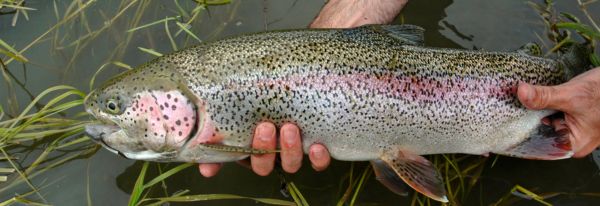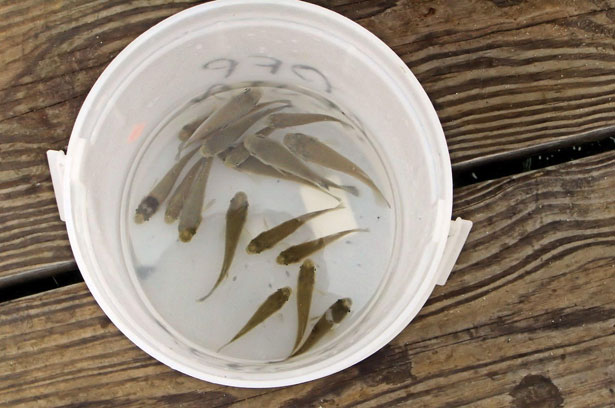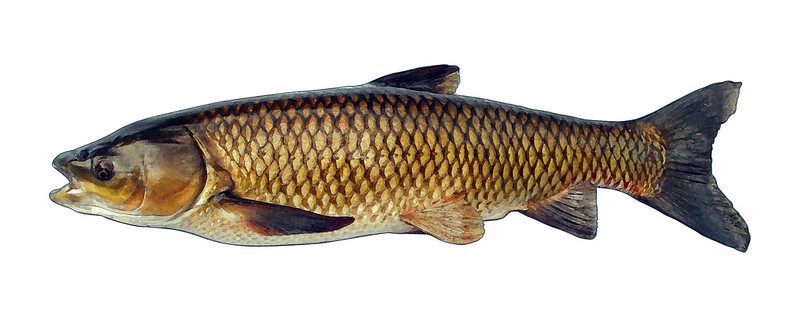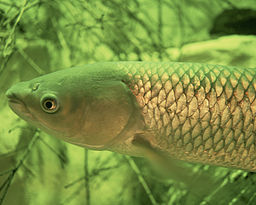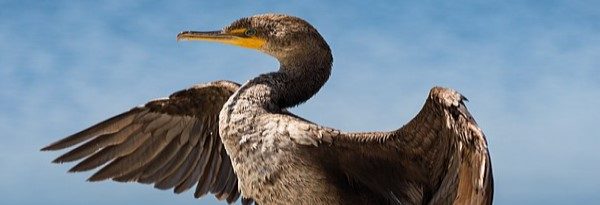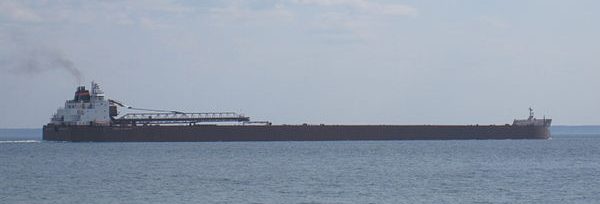Bruce Barton and Paul Hamblin have developed a report on the environmental effects of open-cage salmonid aquaculture in Ontario and provided recommendations for future research, here.
Focus
GBA supports aquaculture expansion to meet the demand for fish products, but it should be sustainable, i.e. in closed containment systems. GBA continues to advocate for the open-net pen aquaculture operations in Georgian Bay and the North Channel to cease causing negative environmental impacts. We are active in persuading the federal government to require the industry to comply with the Fisheries Act and international standards and guidelines in proposed new aquaculture laws and regulations.
Committee Members
- Chair: Claudette Young
- Members:
- Bruce Barton
- Jim Bolton
What is GBA Doing?
- GBA has made numerous submissions over the years which can be can be here.
- GBA meets regularly with the respective Ontario and federal government ministries and liaises with the industry.
What can you do?
- Support the GBA position with your MP and MPP.
Summary of GBA’s primary concerns regarding Open Net Cage Aquaculture
The main concerns of the Georgian Bay Association (GBA) and its stakeholders regarding cage culture operations in Georgian Bay and the North Channel, and the Great Lakes in general are:
- reductions in water quality, particularly phosphorus loading and hypoxic events;
- effect of nutrient loading on water transparency and algae production, particularly the presence of blue-green algae;
- impacts of nutrient loading and sedimentation on the benthic invertebrate community,
- its species diversity, and its natural habitat;
- effects of the growth of quagga and zebra mussels and other invasive species that are attracted to the farms;
- effects on native, wild fish stocks by the inevitable escapements of domesticated Rainbow Trout or other new introduced species, and disease pathogens they may carry, and by the loss of habitat due to anoxic conditions caused by the farms;
- possible effects of introducing contaminants and/or antibiotics into the environment from contaminated or medicated feed sources; and
- future climate change effects, such as rising water and air temperatures that will impact total phosphorus and water quality; and higher wind speeds and increased ice action that will increase the risk of escapements.
Additional matters that should be considered:
- Georgian Bay, being part of Lake Huron, is an international water and thus should be treated differently from enclosed systems in inland waters. Regulatory agencies should be in compliance with the Boundary Waters Treaty and the Great Lakes Water Quality Agreement. In that regard, the state of Michigan, after thorough review, has refused to grant licenses for open net-pen aquaculture within Lake Huron.
- The Great Lakes Fishery Commission has encouraged all Great Lakes jurisdictions to “prohibit the establishment of any net-pen aquaculture facilities in the US waters of the Great Lakes to protect the water quality and fishery of the Great Lakes system.”
- In recent International Joint Committee’s science advisory webinar meetings, it was acknowledged that open net-pen cage aquaculture is a significant source of phosphorous loading to Lake Huron. A common thread in past international studies is that net-pen fish culture represents a significant point source of organic waste and nutrients in lakes.
- For regulation of effluent release, the US Environmental Protection Agency designates open net-pen aquaculture as Concentrated Aquatic Animal Production (CAAP) and includes it under the “point source” category, and the EU’s European Environment Agency includes fish farms under “point sources”.
- In a recent Fisheries and Ocean’s Discussion Paper leading up to a proposed new federal Aquaculture Act, it was suggested that the regulatory framework governing aquaculture would prohibit “the deposit of biochemical oxygen-demanding matter, pest control products, drugs, or other harmful chemicals that can harm fish or fish habitat”, which is consistent with the present Fisheries Act.
- With respect to the pan underway to increase the license period from 5 to 20 years, the recent report (November 2020) by the Auditor General of Ontario referring to fish farming indicated that “Quadrupling the number of years a license is valid introduces more risk to the environment from adverse effects.”
GBA supports the development of aquaculture as a viable industry for Ontario, but insists that it is practiced in a way that is sustainable and has minimal impact on the environment. For that reason, we advocate the transition of open net-pen systems in Georgian Bay and the North Channel to either contained water-based systems, or land-based systems, in order to:
- maintain the current high level of water quality in offshore waters while ensuring that the more environmentally sensitive nearshore waters do not become over-enriched;
- maintain the integrity of native fish and invertebrate communities and their habitat; and,
- minimize the additional risk associated with the stated objective of the Ontario Aquaculture Association to expand Ontario open net cage farm operations.
Transitioning to land-based fish farms is a growing trend in coastal Canada and globally, not only for environmental reasons, but also to ensure better operational control and a consistently high-quality market product. GBA considers that adopting a proactive approach to regulatory oversight of cage fish farms in the Great Lakes as well seems a more prudent step forward rather than a reactive approach to problems as they occur.

Recent Articles:
- Status of Lake Wolsey – Sept 2021
- April 2019 AGM/ Presidents meeting Aquaculture Sub Committee Presentation
- GBA Strengthens Strategy on Aquaculture Opertations, UPDATE Fall 2018
- GBA Presses Minister for Action on Aquacultue, UPDATE Spring 2018
History & Background
- Aquaculture in Ontario originally consisted of many small land-based farms organized under the Ontario Aquaculture Association (OAA).
- In the early/mid 1990s, the Ontario government granted several licenses to operate net-pen (or cage) aquaculture in Georgian Bay.
- Ontario is the only jurisdiction along the entire Great Lakes coastline that allows net-pen aquaculture in public waters. Net-pen aquaculture operations are specifically prohibited in Quebec and in all the US States that border the Great Lakes.
- Aquaculture business owners in Ontario are given free access to public space. They are granted exclusive rights to use a freshwater lot to conduct an industrial operation under the water (high density feed lot), and to use the public trust waters as a dilution sink for the pollution generated (manure, excess feed, antibiotics etc).
- To meet environmental regulations, water lots (referred to by OMNR as Land Use Permits) are sized so that the measurable impact at the water lot boundary is diluted to within standards.
- Environmental standards within the water lot are waived, and the cumulative effect of pollution load is not considered.
- The net-pen business owners do not fully bear their environmental impact:
-
-
- The impact is immediately diluted through the water
- It is only measurable slowly through time, after years of operation.
- The net-pen business owner is not responsible for any future environmental remediation.
-
- This is an aquatic example of ‘tragedy of the commons’, as the environmental cost is not suffered by the business owner, nor even reflected in the cost of the product, but will be borne by the entire public at some point in the future.
- The inevitable environmental damage that net-pen aquaculture can cause has been proven by the irreversible (to date) degradation of the LaCloche Channel site (1) and at Lac Heney (2). The net pen operators in both locations were not required to remediate their damage. Government regulators simply claimed that the operations where sited incorrectly.
- Due to the proven negative consequences of ‘poor site selection’, the precautionary principle should be applied moving forward. However, the principle has been abandoned by government agencies tasked with developing the industry.
- Operational practices such as fallowing and site rotation are purported to be ‘best management practices’ that will ensure ‘environmental sustainability’. This de facto acknowledges the pollution problem of the sites. Aside from the assumption that society has accepted the premise that the assimilative capacity of an aquatic ecosystem should be used to treat an industry’s waste, there is no science to predict the assimilative capacity, and the true damage of net-pen aquaculture will not be known until after the damage occurs. At that point, there is no recourse to restore the aquatic resource to its original clean state.
- By the public subsidy of the freshwater water resources, net-pen fish farmers are given free space, free water, free wastewater treatment, and are waived from environmental standards in their water lots, which gives them a competitive and market advantage over their terrestrial counterparts. As a direct consequence, land-based aquaculture in Ontario has withered as net-pen aquaculture prospered (3). The unfair discrepancy between land-based and net-pen farming caused the industry to split up in 2002. The net-pen farmers formed their own organization called the Northern Ontario Aquaculture Association (NOAA) (4). The land-based component could not compete, and OAA is now struggling as the Ontario Fisheries Enhancement and Aquaculture Association (5).
- NOAA is an industry group representing only four fish farming companies. It receives an unknown, but possibly significant, amount of subsidization funding from Industry Canada’s Fednor program (6), Ontario Ministry of Northern Development (7), Canadian Department of Fisheries and Oceans (DFO) (8), and possibly the Ontario Ministry of Natural Resources (OMNR) (9) and Ontario Ministry of Agriculture and Rural Affairs (OMAFRA) (10). One may reasonably question why a tiny industry with only four primary employers receives such an inordinate amount of resources and promotion from the federal and Ontario Governments.
- In Ontario, net-pen aquaculture is permitted through the Fish and Wildlife Conservation Act (F&WLCA) Section 47 (only 3 lines), and granting of water lots is permitted through the Public Lands Acts. Both acts are managed by the OMNR and treated as Class EA’s. One may reasonably question whether the intent of the Fish and Wildlife Conservation Act and the Public Lands Act was to allow the growth of an agri-food industry inside freshwater lots.
- In Canada, net-pen aquaculture is promoted by the DFO through the National Aquaculture Strategic Action Plan (11). The DFO has an inherent conflict of interest in aquaculture, because it is both a regulator and a promoter of aquaculture – one mandate is to ensure a healthy productive aquatic ecosystem, and the other mandate is to promote the growth of aquaculture. The DFO does not differentiate between ocean (marine) and freshwater aquaculture in regard to the environmental impact. The flushing and assimilative capacity of the ocean is different than freshwater lakes, and therefore requires a different management framework. Freshwater net-pen aquaculture has been proven to have a negative effect on aquatic ecosystems. (12)
- The only government agency raising concerns regarding net-pen aquaculture is the Ontario Ministry of Environment (OMOE) (13).
- In numerous reports to the Ontario Legislature, the Environmental Commissioner of Ontario (ECO) has questioned the claim made by government promoters of the open net-cage systems as legitimate and responsible use of the public waters. Furthermore, the ECO is still calling for a freshwater aquaculture policy to be “prescribed” within the Environmental Bill of Rights (EBR) where it would be properly open for public consideration. (14)
- The Georgian Bay Association (GBA) (15) has been raising awareness of the pollution impact of net-pen aquaculture for over ten years, which may have contributed to the informal moratorium on expansion. However, the DFO has renewed momentum and is well funded to build a large aquaculture industry that they envision inside fresh water net-pens.
- A representative from the GBA Aquaculture committee attended the DFO’s National Aquaculture Strategic Action Plan Initiative on September 24th, 2009 and found she was the only ‘other’ stakeholder in a room full of industry people and government promoters. The purpose of the meeting was for DFO to hold public consultation before finalizing an action plan to be released in draft form in the near future for final comment. The Action Plan purports to enable the industry to grow exponentially. Highlights from the GBA’s summary report (16) reveal:
-
- A high degree of intimacy between the industry and their regulators.
- A lack of transparency as the DFO adopts an “Ontario freshwater’ plan” authored by NOAA, with no public consultation, and the plan will be released to the public alongside a memorandum of understanding nearing its completion to be signed by Canada and Ontario.
- The so-called “Ontario Plan” is solely net-pen focused. The DFO strategy has abandoned land-based options such as the “Canadian Model Aqua-Farm”, appearing to have been switched from the much-heralded land-based model to a net-pen based model “model Cage Farm” initiative.
- DFO does not differentiate the impact of net-pens on marine or freshwater systems.
- DFO employee Eric Gilbert stated clearly that his focus is economic development for the freshwater net-pen sector, and that various federal initiatives will aggressively invest in freshwater aquaculture; that the Ontario industry partners and government regulators are lucky because there is no public resistance – unlike that on the East and West coasts; and, that more resources will be focused on freshwater due to the lack of socio/political backlash.
References:
(1) http://www.ijc.org.php/publications/html/aquaculture/app09.html
(2) http://lacheney.ca/protect/en/Home.htm
(3) Figure 1: www.ontarioaquaculture.com/files/Aquastats_2006-Final.pdf
(4) http://www.ontarioaquaculture.com/index.html
(5) http://ontarioaquaculture.net/index.html
(6) http://www.ic.gc.ca/eic/site/fednor-fednor.nsf/eng/home
(7) http://www.mndm.gov.on.ca/default_e.asp
(8) http://www.dfo-mpo.gc.ca/index-eng.htm
(9) http://www.mnr.gov.on.ca/en/index.html
(10) http://www.omafra.gov.on.ca/english/index.html
(11) http://www.dfo-mpo.gc.ca/aquaculture/lib-bib/nasapi-insapa/nasapi-inpasa-eng.htm
(12) Can. J. Fish. Aquat. Sci. 66(11): 1936–1948 (2009) | doi:10.1139/F09-121 |
Published by NRC Research Press
(13)Environment commissioner sounds warning on aquaculture:
Sat 05 Nov 2005: Owen Sound Sun Times. See also http://www.ene.gov.on.ca/en/index.php
(14) http://www.eco.on.ca/eng/
(15) http://www.georgianbay.ca/index.html
(16) GBA’s Internal Report on DFO’s Action Plan Initiative 09’09.doc (Can be accessed upon request)
GBA Submissions relating to Open Net Cage Aquaculture in Georgian Bay and the North Channel can be found – here



